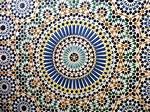I believe that the educational system today should be used to encourage, motivate, inspire and allow children to follow the path they wish to. Primarily, I believe, there are social aspects of education that must be addressed and a society’s values and norms should be displayed so that children are able to function effectively in society. However I don’t believe that this is for the benefit of society; it is for the benefit of the individual. This will allow them to form relationships, whether it be family, friends, colleagues or clients. It is important to gain these understandings at a young age as these values and norms that are expected will allow a child to form their own understanding with time and life experience. Instilling this cultural awareness is crucial.
Education should not just be for learning knowledge. In my view, some of the most intelligent people I know have little social skills and ability to adapt in challenging situations such as interviews for jobs. These are the sort of skills children should be encouraged to adapt in the early years through communication and understanding of different opinions, perspectives and cultures. I believe that these skills are equally if not more important than vast knowledge in particular subjects.
Children should have free choice of the subjects they wish to explore, and although the curriculum is key in allowing children to receive a fair and equal education, it is fundamental that children are heard and feel valued. Children should be allowed to explore their learning in a controlled way in which they can be kept on task, while using a wide variety of facilities, environments and tools. This independence will encourage a child’s imagination to grow and they will gradually form their own opinions of the world. I do not want to contribute to a society full of single minded individuals. I want to be inspired by the children in the same way that I inspire them! It is a key aspect of the educational system that the teachers are continuously developing and trying new approaches to learning.
With regard to discipline, I hope to improve behaviour, not necessarily discipline. I want children to recognise the rights and wrongs, but also to understand why they are expected to adopt particular manners. This would not only allow the children to develop their social skills but to also to make the choice of how they wish to act. I believe that if children feel like they have some control of the situations in class then they are more likely to cooperate. In my experience, explanations and understanding are key to the improvement of behaviour in a child. It is not only important for the child to know what’s gone wrong, but also to recognise myself. Has it potentially been something that I could have avoided myself? I aim to reflect daily of the situations which arise in the classroom and this should allow me to evaluate the strengths and weaknesses in order to adapt my approach towards the individuals of my concerns.




